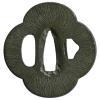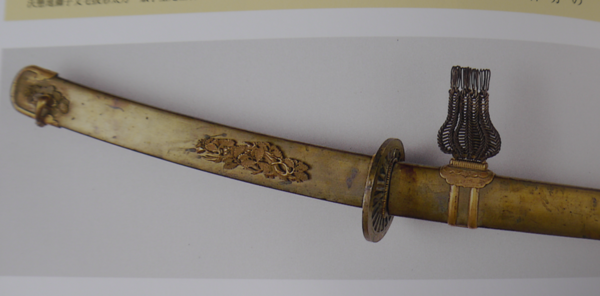-
Posts
276 -
Joined
-
Last visited
-
Days Won
1
Content Type
Profiles
Forums
Events
Store
Downloads
Gallery
Everything posted by Iekatsu
-
Dating anything that is not recorded, dated or present in archaeology, is rife with difficulty. Often the only clues we have are in the style, motif, construction methods/techniques and materials. All of which are further confused by opinions/information that that has been disseminated and repeated by well meaning experts without sufficient evidence.
-
I do the same, any mention of swords will have the package flagged for sure.
-
The vast majority of San-mai Tsuba, including all the examples in this thread are from the Edo period, they are mass produced and generally poor quality. Pre-Edo examples exist but they are a very different beast. Papering for San-mai Tsuba is pretty bad, the attributuons are all over the place and many that get papered as Ko-kinko/mino should not be.
-
The file marks is how the gold is attached, it is pressed in to hold it in place. The file marks are visible because over time it has squashed in further and has worn. This is honestly really rudimentary stuff, there is no confusion here.
-
The Tsuba is not cast and a gold pen was not used to decorate it, it is just nunome zogan as Geraint pointed out.
-
I will say what I would say to anyone starting out with armour, start with a Kabuto, with your budget you could get something nice.
-
Brian, This might help: https://tsubakansho.com/tag/ienori/ I would not put too much stock into the Nobuie claim, Saotome Ienori (the armour smith) worked in the Late Edo period, the Saotome armour smiths were well known for making Tsuba, particularly Utsushi of older styles.
-
A great summary Jean.
-
Bronze was definitely used to make Tsuba, they were cast using molds, like the examples found in the Nara site mentioned by Steve above. Every Kagami-shi Tsuba I have had tested is Bronze in composition. Yamagane/copper was not used to cast Tsuba, the properties mean that it would not flow sufficiently into a mold, however Yamagane/copper was used to cast blanks for making Tsuba, by dropping molten Yamagane/copper into water, as demonstrated by Ford and documented on Youtube.
-
Interesting that it can not be removed, perhaps I was wrong. If it was Urushi it would be stubborn, but brittle and would flake off with force applied. As to molding shapes like the pine needles, any shapes and forms can be built up in lacquer, the soft metal elements could also be embedded in it, or be secured to the plate in the normal manor and lacquered around. Urushi being used on Tsuba has a long history, generally as a protective coating but also for decoration, nothing particularly ground breaking.
-
Hard to say if the Mei has been stamped or cast. Just a reminder that Yamagane as far as my research has shown was not used for casting, when it looks like Yamagane it is always bronze.
-
Given the clearer photos, I still think it is Urushi (lacquer), Tetsu Sabiji Urushi Nuri, common on armour.
-
According to the shrine, the blade is Kamakura period, the Koshirae is Nanboku-chō period, and that the koshirae was likely made specifically for the donation. I presume it was donated at that time, but there is no mention of how/when it was donated. Stylistically it is not a Momoyama period Tachi Koshirae in my opinion, there are many extant examples that can be drawn from for comparison. There is another example donated to the same shrine (image below), that is quite similar stylistically, that was said to have been donated Ashikaga Yoshimitsu in the same period. It is not a smoking gun, but I think worthy of discussion.
-
I agree with lacquer, or paint.
-
It is always going to be a sliding scale of probability, there will always be significant gaps in what is known and that is ok. I think that the primary point of this thread is acknowledging that those gaps exist and that some of the established and accepted knowledge is not much more than conjecture without credible sources. The NBTHK grading is flawed because many categorisations are based on dated or flawed logic. This is something that is unlikely to be rectified, because it would potentially nullify papers that have already been issued. A new system could be created, but perhaps that is a topic for another thread.
-
Do you have more information about this piece?
-
Anthony is right, there is no evidence to support that the Saotome were active before the Edo Period. There is also no link to support the spoked Kiku and Tembo style examples that are so often associated with Saotome. The Saotome definitely made Tsuba, there are many examples, the vast majority of which are signed.
-
Yeah it is clearly Yamagane, there is actually quite a bit of variation in colour depending on the composition, browns of various shades all the way through to greens like the example in my avatar.
-
I think the biggest problem we are going to encounter is the lack of reliably dateable complete Koshirae in between Nanbokucho and the Late Muromachi period, it is a bit of black hole, a sign of the turbulent times I guess. For the investigation to continue, I think it will be important to source Koshirae examples from this period, even if they do not include Sukashi Tsuba, so that we can form a base line of what was in use.






